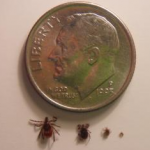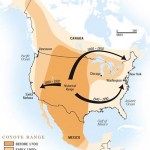Various bacteria
I've been working on livestock-associated Staphylococcus aureus and farming now for almost a decade. In that time, work from my lab has shown that, first, the "livestock-associated" strain of methicillin-resistant S. aureus (MRSA) that was found originally in Europe and then in Canada, ST398, is in the United States in pigs and farmers; that it's present here in raw meat products; that "LA" S. aureus can be found not only in the agriculture-intensive Midwest, but also in tiny pig states like Connecticut. With collaborators, we've also shown that ST398 can be found in unexpected…
It's a parent's worst nightmare. Your healthy child is suddenly ill. The doctors you've trusted to treat him are unable to do anything about it. Drugs that we've relied upon for decades are becoming increasingly useless as bacteria evolve resistance to them. New drugs are few and far between. Old drugs, shelved because of their toxic side-effects, are being brought in as last resorts--kidney failure, after all, is better than certain death.
Unfortunately, this is increasingly the state of medicine today, and people are dying from it. The World Health Organization even recently …
Warning: here be spoilers
In many latter-day zombie movies, books, and TV shows, zombie-ism has a biological cause. In 28 Days Later, the infection is caused by the "Rage" virus, which escaped from a lab when animal rights activists break in and release a group of infected chimpanzees. Of course, one of the animals promptly bites one of its "liberators," and the infection spreads rapidly throughout Great Britain. In Zombieland, it's a mutated form of "mad cow" disease. The Crazies, it's the Trixie virus; World War Z, the Solanum virus; Resident Evil, the T virus. I could go on and on.…
Student guest post by Kyle Malter
In many areas of the country there is a vile blood sucker that lurks in our forests, our parks and even our backyards. What concerns us is not what this creature takes but rather what it leaves in our body after it bites us: corkscrew shaped bacteria called spirochetes and with the name Borrelia burgdorferi. When the bacteria invade our bodies and cause problems along the way we call it Lyme disease.
It is Lyme, not “Lymes” disease, and here’s how it got that name. In the early 1970’s a large number of cases emerged involving children with a…
Student guest post by Brandon Woods
A Dangerous Paradise
From jungles with jaguars to crystal blue lakes with freshwater sharks, Nicaragua is one of the most beautiful and dangerous countries in Central America. The brilliant biodiversity attracts millions of tourists each year and the looming volcanoes that pepper the landscape can be an exciting yet unsettling sight. However, in reality much of the danger in Nicaragua comes from the risk of infectious diseases. For example, if you’re planning to travel to this tropical paradise anytime soon, the Center for Disease Control (CDC) states that…
Student guest post by Molly Stafne
Nothing could be worse than watching your seven-year-old lying in a hospital bed fighting for his life after being diagnosed with hemolytic uremic syndrome. Unfortunately, Mary McGonigle-Martin experienced it first hand as her son, Chris, fought for his life after being poisoned by E. coli 0157:H7 found in contaminated raw milk. Like many mothers, Mary was coerced into believing the inaccurate “facts” given to her by the farm she purchased raw milk from. Too often across the US, parents are given incorrect information about the safety of the milk they drink…
Student guest post by Jack Hamersky
After successfully completing a job interview I had the opportunity to take the next step in my employment process: taking a Tuberculosis or TB test. I have received the test before but never really understood the point of testing for a disease no one ever sees in my community. I always thought, “Why not focus all this effort and money on more prevalent infectious agents such as Ebola or HIV?” You know, focus on something important. So, as the nurse called me in from the waiting room I began to curse that hard little bubble that would soon be…
It's time for this year's second installment of student guest posts for my class on infectious causes of chronic disease. Fourth one this round is by Kristen Coleman.
If you are anything like me, you have been told countless reasons over the years why we must watch what we eat, keep our cholesterol intake down, and try to work out. It shouldn’t really come as a surprise then that I, since I am a public health student after all, aim to convince you of yet another reason why a healthy diet and exercise are valuable. What is this huge reason to avoid Big Macs and think about…
First of five student guest posts by Kristen Coleman
Every morning as I prepare for class, I go through the same internal dialogue, “to wear or not to wear my hearing aide.” I am forced to do this because when I was a child I, like most American children (about 80% by age 3 as estimated by the American Academy of Family Practitioners, AAFP), suffered from otitis media and my treatment resulted in hearing loss. The treatment I underwent was called tympanostomy with ventilation tube insertion, which has rapidly become the most common reason for general anesthesia in children in the United…
I have a post up today at the Scientific American Guest blog, discussing how an earthquake and denial led to prairie dog plague. It details an outbreak of plague in Victorian San Francisco--the first time plague hit the United States--and the many downstream consequences of that outbreak (which began in 1900 and wasn't really contained until 1908). While the story is over at SciAm, here I wanted to talk more about why the outbreak became such a public health disaster.
The outbreak was first recognized by Dr. Joseph Kinyoun, a bacteriologist who had been, until his transfer to San Francisco,…
Despite its reputation as a scourge of antiquity, Yersinia pestis--the bacterium that causes bubonic plague--still causes thousands of human illnesses every year. In modern times, most of these occur in Africa, and to a lesser extent in Asia, though we have a handful of cases each year in the U.S as well.
When Y. pestis was first confirmed as the cause of bubonic plague during an 1894 outbreak in Hong Kong, most people assumed that we also now knew the cause of the 14th-century Black Death, and the later plague outbreaks that resurfaced periodically. However, there has been lingering…
Regular readers don't need to be told that I'm a bit obsessed with zoonotic disease. It's what I study, and it's a big part of what I teach. I run a Center devoted to the investigation of emerging diseases, and the vast majority of all emerging diseases are zoonotic. I have an ongoing series of posts collecting my writings on emerging diseases, and far too many papers in electronic or paper format in my office to count. Why the fascination? Zoonotic diseases have been responsible for many of mankind's great plagues--the Black Death, the 1918 "Spanish" flu pandemic, or more recently, HIV/AIDS…
This is the last of 16 student posts, guest-authored by Jessica Waters.
Climatologists have been warning us about the ongoing and impending consequences of global warming for years. But the results of climate change affect more than just polar bears and penguins - if you live anywhere in the northeastern, north-central or west coast states of the U.S.., you could be at a greater risk for contracting Lyme Disease.
Lyme disease is an infection of the Borrelia burgdorferi bacterium that is spread through black legged ticks (otherwise known as deer ticks) who feed on the…
This is the thirteenth of 16 student posts, guest-authored by Jessica Ludvik.
One Disease, Many Species
Brucellosis, more commonly known as undulant fever in humans or bangs disease in cattle, is one of the oldest bacterial scourges of livestock-producing nations, especially those in which the animals live in close proximity with the human population. The disease is caused by bacteria of the genus Brucella. Within this category are many species of bacteria, each almost exclusive to a particular animal species. A few of the most common seen in veterinary and human…
This is the twelfth of 16 student posts, guest-authored by Stanley Corbin.
Disease in wildlife is an important concern to the health and safety of humans and domestic animals. The expanding growth of our nation and resultant land use changes with urbanization has resulted in a shrinking habitat and fragmentation for all animals, including humans. The effects of ecological disruption are universally recognized and adversely effects wildlife through multiple mechanisms.
Hand it to the coyote (Canis latrans) for its ability to exist with humans. The resilience of this animal can be…
This is the eleventh of 16 student posts, guest-authored by Ilze Berzins.
When one hears the words “food-borne illness”, what comes to mind? For me, I think of a medium rare, pink, juicy hamburger, or something like potato salad that may be made with mayonnaise containing raw eggs, or maybe a fresh green garden salad sprinkled with sprouts. I am sure we have all heard about outbreaks or recalls surrounding these familiar dishes. And the usual suspects contaminating these food stuffs are often bacteria with familiar names such as E.coli or Salmonella. …
This is the tenth of 16 student posts, guest-authored by Jean DeNapoli.
I own a small back yard flock of sheep and lambing season is the most exciting and rewarding time of the year. Nothing is more enjoyable than watching a lamb who takes a few wobbly steps and nurses for the first time as her mother nickers encouragement. Within a day, the lamb will be playing, bucking, running, and exploring her world.
Despite the pastoral wonders of the season, lambing is also inherently stressful. I must constantly check the barn to monitor for birthing problems and help out…
This is the eighth of 16 student posts, guest-authored by Michelle Formanek.
For many of us in the scientific world, particularly budding infectious disease epidemiologists like myself, the Plague (or, more dramatically, the “Black Death”) is a prime example of the rapid and devastating spread of an infectious disease. So devastating, in fact, that it wiped out nearly one-third of the population in Europe in the mid-1300’s. That’s roughly equal to 25 million people. It then persisted and has caused various outbreaks throughout history, most notably the Great Plague of London in…
This is the sixth of 16 student posts, guest-authored by Anna Lyons-Nace.
Natural…unprocessed…raw. These terms are often used by consumers, nutritionists and health experts to denote the most healthful, high-quality food options available for consumption. However, when pertaining to the recent increasing trend in raw milk consumption, can consumers be confident that they are choosing the safest and most healthful option? Statistical data and health studies would suggest otherwise.
Before we delve into the discussion any further, we should first establish what is…





